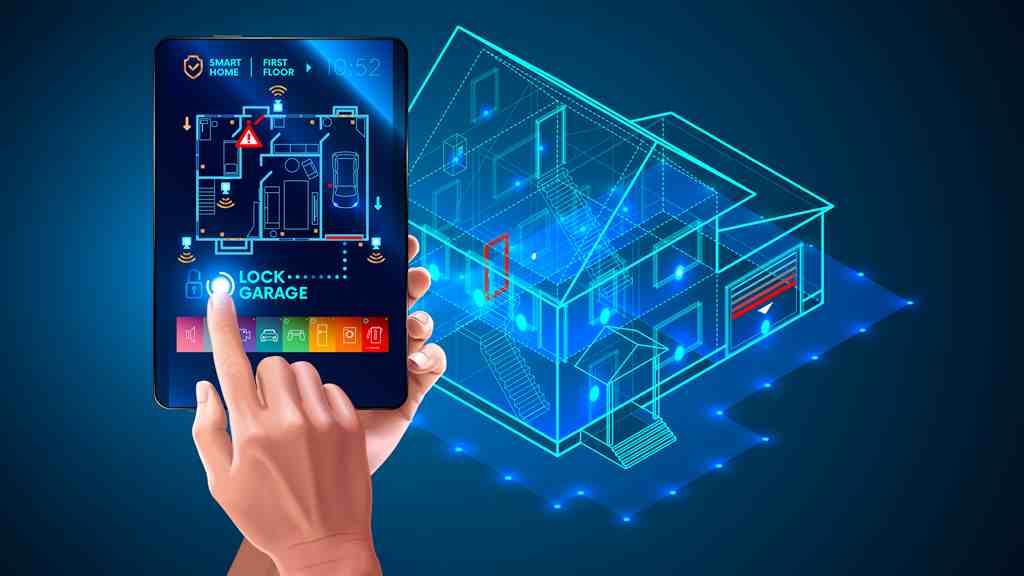An organization that’s seeking to shorten its software supply cycle and enhance the agility of its development teams may be higher fitted to DevOps. In addition, utility lifecycle administration supplies an organization with a transparent direction for its workflow before builders begin building the app. The first stage — defining requirements — permits companies to develop a enterprise case, decide the app’s lifespan and plan the necessary sources before committing to improvement. This saves the group time and money by avoiding unnecessary work and costly mistakes. The Software Development Life Cycle (SDLC) is a systematic course of for planning, creating, testing, and deploying a software program system. It primarily focuses on the event part, outlining the phases from ideation to software program release.
In practice, it entails orchestrating duties, from ideation to decommissioning, to make sure optimal efficiency and relevance all through the applying’s lifespan. Traditionally, financial establishments managed risks separately based on the kind of threat involved. Yet, with the evolution of the monetary panorama, it’s now seen as an outdated approach. ALM practices concentrate on asset administration and threat mitigation on a macro level, addressing areas similar to market, liquidity, and credit dangers. The apply of asset and liability management can include many elements, together with strategic allocation of property, danger mitigation, and adjustment of regulatory and capital frameworks.
Specifying requirements usually happens top-down, which means the needs begin with essentially the most basic and move into the more particular and detailed. As a result, case requirements are often in a hierarchical tree construction, with every node representing a more specific sub-requirement for a extra common father or mother node. However, other growth approaches, such because the iterative Agile improvement course of, use much less hierarchical structures to record requirements, with the defined wants identified as use circumstances. The firm additionally produces conferences and trade shows for enterprise leaders and the authorized occupation. Law Journal Press, ALM’s skilled guide imprint, publishes over one hundred thirty treatises on a broad range of authorized matters. Other ALM businesses embody e-newsletter publishing, courtroom verdict and settlement reporting, manufacturing of professional educational seminars, market research, and content material distribution.
Continuous Upkeep
SDLC methodologies, such as Waterfall, Agile, and Scrum, information developers in constructing the software program, ensuring it is environment friendly, scalable, and meets consumer requirements. It includes acting on user feedback, addressing unforeseen points, implementing updates, and ensuring compatibility with evolving applied sciences. Additionally, patches may be necessary to fortify the software program as safety threats emerge. Continuous upkeep ensures that the software program is not just alive however thriving, remaining relevant and priceless to its users. In essence, ALM provides a framework to handle an software’s lifecycle, ensuring it meets evolving business needs and combats challenges that arise during its journey. As software evolves, ALM emphasizes continuity, addressing changing necessities, software vulnerabilities, outdated libraries, and extra.
It continues to evolve, influenced by broader tendencies in software development, technological innovation, and shifting enterprise calls for. As we look forward, a number of tendencies and predictions emerge, poised to form the future https://www.globalcloudteam.com/ of Application Lifecycle Management. In essence, the success of ALM is mirrored not simply in the software program’s quality but additionally in the way it aligns with enterprise goals, user wants, and the broader market landscape.
ALM device users can even connect paperwork, screenshots and URLs to all artifacts and customize all graphs and reports in various formats — including Adobe Acrobat and HTML. In this rapidly advancing technological world, ALM acts as each an anchor and compass, grounding teams in greatest practices while pointing the easiest way forward. For organizations aiming for excellence in their software endeavors, understanding and implementing robust ALM practices isn’t just useful — it is crucial.

ALM will move from siloed practices to extra holistic approaches, integrating with broader enterprise processes and emphasizing end-to-end visibility and collaboration across departments. As cyber threats develop in sophistication, security turns into not just an IT concern but a core enterprise risk. Future ALM practices will incorporate safety measures at every stage, from preliminary design to deployment, emphasizing secure coding practices and common vulnerability assessments.
Asset And Liability Administration (alm)
In other words, ALM contains all 5 stages of the app’s lifecycle — necessities, improvement, testing, deployment and upkeep — but SDLC solely contains one stage — development. Application Lifecycle Management (ALM) stands as a critical element of contemporary software program development, offering an integrated strategy encompassing every phase, from inception to retirement. As we have explored, ALM’s significance goes past just software program creation — it ensures quality, effectivity, and alignment with overarching enterprise objectives. The fusion of AI, a shift towards cloud-based options, and an unwavering give consideration to security highlight the evolution of ALM to meet tomorrow’s challenges. At its core, asset and liability management is a method for financial institutions to deal with risks ensuing from a mismatch of assets and liabilities. Most usually, the mismatches are a result of modifications to the financial panorama, similar to altering interest rates or liquidity necessities.

ALM also improves groups’ decision-making abilities when coping with growing older software program. Most ALM tools include model management and real-time planning, permitting team leaders to simply map the applying’s future. This capability also can remove confusion for companies coping with multiple functions. Evaluating the efficacy of your Application Lifecycle Management (ALM) practices is essential in the fast-paced world of software improvement.
Advanced instruments can help define these necessities, ensuring they’re comprehensive and specific. This clarity sets the stage for a smoother development phase, minimizing pricey iterations. Implementing ALM frameworks can provide benefits for many organizations, as it is important for organizations to completely perceive their belongings and liabilities.
Integrating Alm With Other Enterprise Processes
In essence, while SDLC focuses on the “how” of creating software program, ALM offers a holistic view, addressing the “how” as nicely as the “what” and “why” all through the appliance’s complete lifespan. To mitigate the liquidity threat, organizations might implement ALM procedures to extend liquidity to fulfill cash-flow obligations ensuing from their liabilities. Finally, ALM is a coordinated course of that oversees an organization’s complete steadiness sheet. It involves what does alm stand for coordination between many alternative departments, which could be challenging and time-consuming. We imagine that sooner or later, clients shall be using Enterprise Lifecycle Management (ELM) solutions. These will include components of ALM, PLM, and can either combine with ERP systems, and even embody such functions.

ALM emphasizes division coordination, guaranteeing seamless growth, maintenance, and governance integration. Just like an individual, a chunk of software will go through many phases all through its life, all the means in which through to retirement. This is why Application Lifecycle Management (ALM) needs to sit at the epicenter of software improvement processes.
Using ALM frameworks permits an institution to acknowledge and quantify the dangers current on its balance sheet and reduce risks ensuing from a mismatch of property and liabilities. By strategically matching assets and liabilities, monetary institutions can obtain greater effectivity and profitability whereas decreasing threat. For instance, a corporation that is trying to improve the standard and efficiency of its software program improvement process may be well-suited for ALM.
Cloud platforms provide unparalleled scalability, flexibility, and unparalleled collaborative capabilities. Cloud-based ALM tools will turn out to be the norm as companies continue their digital transformation journeys, allowing seamless integration, collaboration, and scalability. Artificial Intelligence (AI) and machine learning (ML) are now not just buzzwords but transformative forces in numerous industries. In ALM, AI can predict potential defects, automate routine tasks, and optimize testing procedures, guaranteeing more sturdy software quality. It’s about guaranteeing a software’s journey, from its inception to its eventual sundown, is seamless, structured, and always aligned with its overarching aims.
One of the advantages of implementing ALM is that an establishment can handle its liabilities strategically to better prepare itself for future uncertainties. The capacity for groups to collaborate ensures that every employee understands the project and its stage. ALM instruments enable workers to trace strategies, adjustments, requirements and project status in actual time, no matter their location. ALM tools also prioritize the various team targets and assist outline the assorted ability units needed for different processes. Application lifecycle administration helps companies achieve high effectivity and gain a aggressive edge by accelerating workflows and ensuring that top-quality products get deployed. Fewer defects imply your growth and testing levels are efficient, ensuring your end-users have a seamless experience.
- As we look ahead, a number of trends and predictions emerge, poised to form the future of Application Lifecycle Management.
- The development and testing levels conclude when the product reaches high quality and stability good enough for release.
- With the rise of DevOps, the line between growth and operations is blurring.
- ALM and DevOps are two approaches in software development with comparable goals however totally different focuses.
ALM, which stands for Application Lifecycle Management, is the specification, design, growth, and testing of a software utility through a system of individuals, tools, and processes. ALM covers the complete lifecycle from thought conception and initial planning, via growth and testing, on to deployment and assist, and ultimately to the retirement of the applying. On the opposite hand, Application Lifecycle Management (ALM) encompasses a broader spectrum. While it certainly involves the development process, ALM spans the complete lifetime of an software — from inception to retirement. It integrates numerous phases of SDLC and extends beyond, addressing the application’s upkeep, optimization, and eventual phase-out.
Software isn’t nearly code; it’s about fixing consumer problems and enhancing their experience. Customer suggestions, evaluations, and net promoter scores provide insights into how properly your software meets consumer wants and expectations, instantly linking to the efficiency of your ALM practices. With the rise of DevOps, the road between improvement and operations is blurring.
